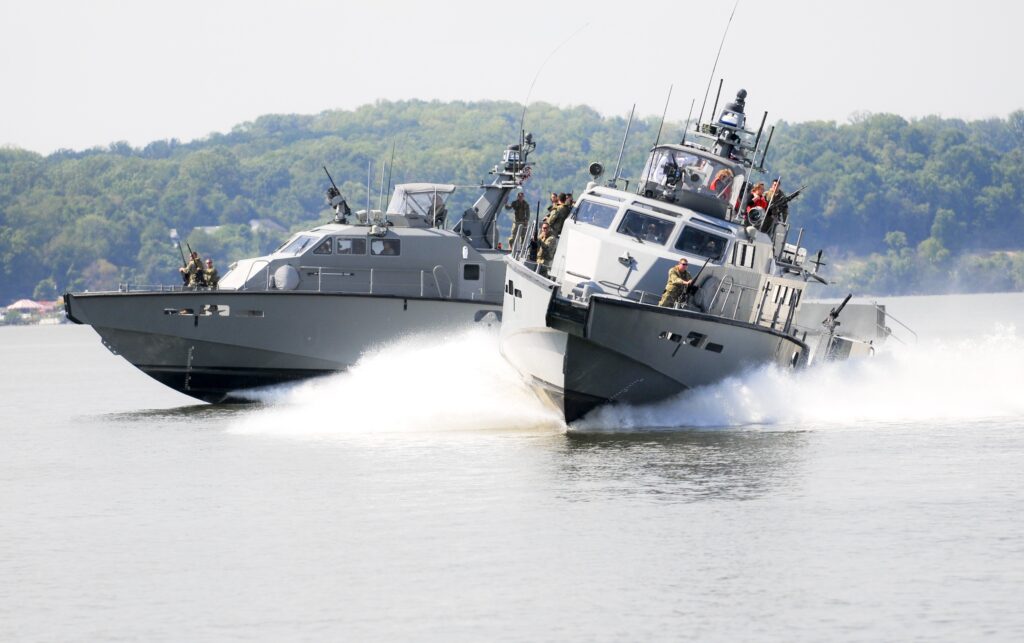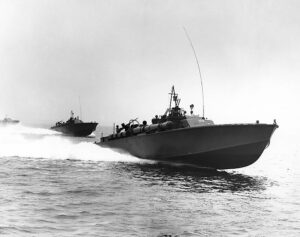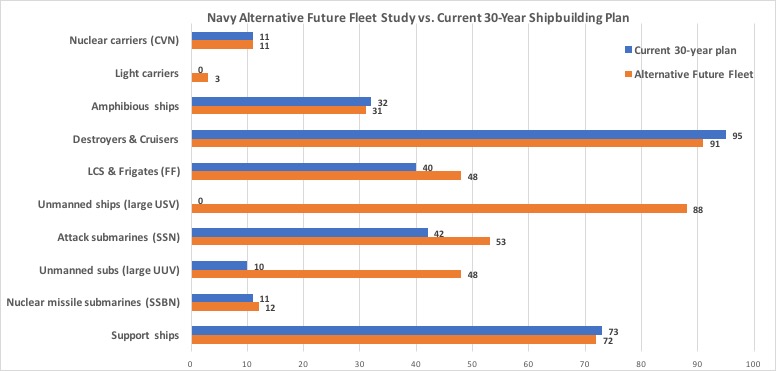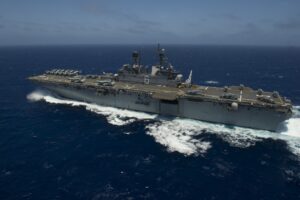Alternative Navy Study Bets Big On Robot PT Boats & LCS
Posted on

Navy Mark VI patrol craft on the Potomac.
WASHINGTON: Light carriers. Robot PT boats. Unmanned subs. A congressionally chartered study, the Alternative Future Fleet Platform Architecture Study, “does not represent any official Navy position,” but offers a surprisingly bold vision for the future of the US Navy.
The study, by a “Navy Project Team” of officers, civil servants, and contractors free to brainstorm without being “constrained” by the service’s official plans, calls for a future “battle force” of 321 manned ships. That’s 10 percent smaller than the official Navy program for 355, let alone the parallel studies Congress commissioned from thinktanks CSBA, which calls for 340 manned ships, and MITRE for 414. But while the official 30-year shipbuilding plan submitted to Congress in 2017 only includes 10 large, seagoing unmanned vessels, and CSBA proposes 80, the Alternative Future Fleet would include 138.
[Read about the CSBA and MITRE alternative fleet studies]

US Navy PT boats (Patrol Torpedo) in World War II
That would be a mix of 48 unmanned underwater vessels — designed to supplement traditional nuclear-powered attack submarines — and a whopping 88 unmanned fast attack boats, derived from the Mark V Special Operations vessel or the Mark VI patrol craft. (A Coast Guard patrol boat is a third option). Instead of developing a new purpose-built unmanned boat, like DARPA’s Sea Hunter, this approach would build on ongoing Navy experiments with converting standard small craft for unmanned operations. They’d be launched from shore bases or from the well decks of amphibious assault ships normally used to transport Marines. The Alternative Future Fleet vessels would be about the 80-foot length of World War II Patrol Torpedo boats (remember PT-109?), and like the PT boats, they’d be armed to attack much larger vessels, with “anti-ship cruise missiles, mines or torpedoes with an operating range in the hundreds of nautical miles.”
The PT boats suffered heavy casualties in World War II, and the modern Navy has eschewed such well-armed but fragile small craft. Countries more callous about casualties, such as Iran, have embraced them. Making the expendable attack boats unmanned might make them palatable to the Navy.

But 88 robot PT boats with missiles ranging hundreds of miles would be just part of the Alternative Future Fleet’s take on Distributed Lethality. This nascent Navy concept, first promulgated in 2015, would put anti-ship weapons on essentially every vessel that can take one, from destroyers to Littoral Combat Ships to supply ships: “If it floats, it fights.” The Alternative Future Fleet would take distributed lethality to greater lengths than any official Navy plan so far. It would shift away from the current reliance on nuclear-powered aircraft carriers to widely dispersed task forces of surface ships, both manned and unmanned — plus plenty of support ships to keep the scattered squadrons supplied, with a robust network to keep them all connected.
The study calculates this “distributed fleet” would create 10 times as many independent units capable of offensive operations as the current, concentrated force. Putting more pieces on the chessboard would give US commanders more options and enemies more headaches, especially with extensive use of Electronic Warfare to hide each task force’s true make-up and location.

The “big-deck” amphibious assault ship USS America (LHA-6)
While deemphasizing nuclear-powered carriers, the Alternative Future Fleet would keep the same number as we have now. It would complement the supercarriers with a new class of light carriers, derived from the LHA-6 America-class amphibious assault ships. Both the CSBA and MITRE studies suggested something similar to increase the fleet’s airpower, but the Alternative Future Fleet goes further and specifically calls for operating flat-tops in pairs, one nuclear powered supercarrier cruising with one light carrier (plus escorts) per task force. The study also calls for many more unmanned aircraft — even at the price of fewer manned fighters — primarily to provide more reconnaissance to find targets long-range missiles. Some of these drones would fly from a specialized variant of the DDG-51 destroyer which trades VLS missile tubes for more UAV and helicopter capacity.
In an interesting contrast to the MITRE and CSBA studies, the Alternative Future Fleet doesn’t propose canceling the controversial Littoral Combat Ship. Instead, the study gives the LCS anti-submarine warfare (ASW) variant a major role escorting carriers and support ships. In the long term, the study says, “as the LCS small surface combatants are decommissioned, they would be replaced by FFs (frigates), which would provide greater lethality and combat capability,” but it doesn’t express any urgency about this upgrade.
In fact, the total small surface combatant force — LCS and future frigates together — would be 20 percent higher in the Alternative Future Fleet, as compared to the current 30-year shipbuilding plan (48 ships versus 40). Meanwhile, the number of large surface combatants would slightly decrease, retiring all cruisers while adding a few more destroyers. Combine these changes with the large flotilla of unmanned vessels, and you have a Navy in which the average ship is considerably smaller than today. The Alternative Future Fleet study’s bet is that long-range missiles, robotics, and robust networks will make this fleet of small ships much more than the sum of its parts.
Subscribe to our newsletter
Promotions, new products and sales. Directly to your inbox.
